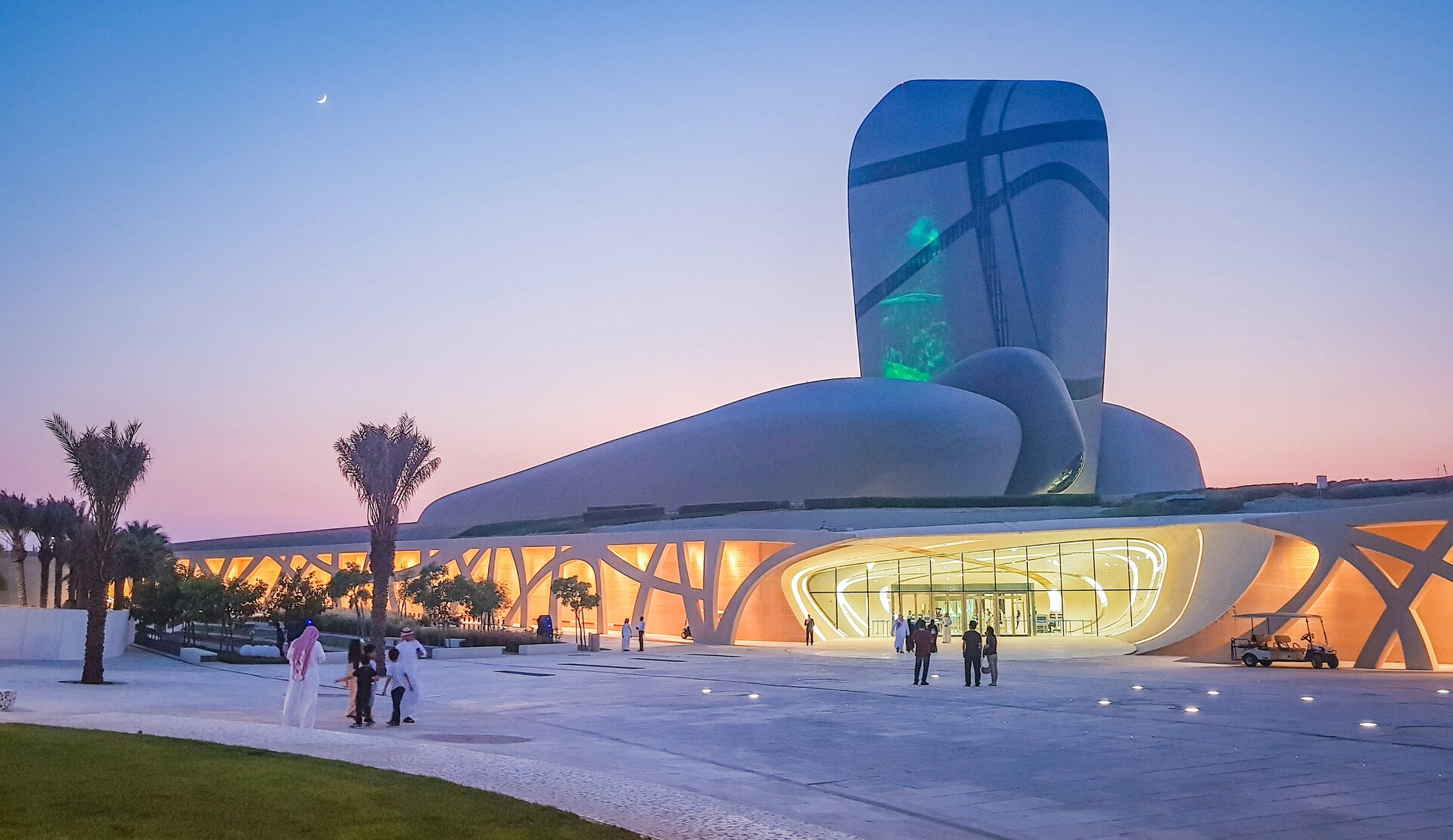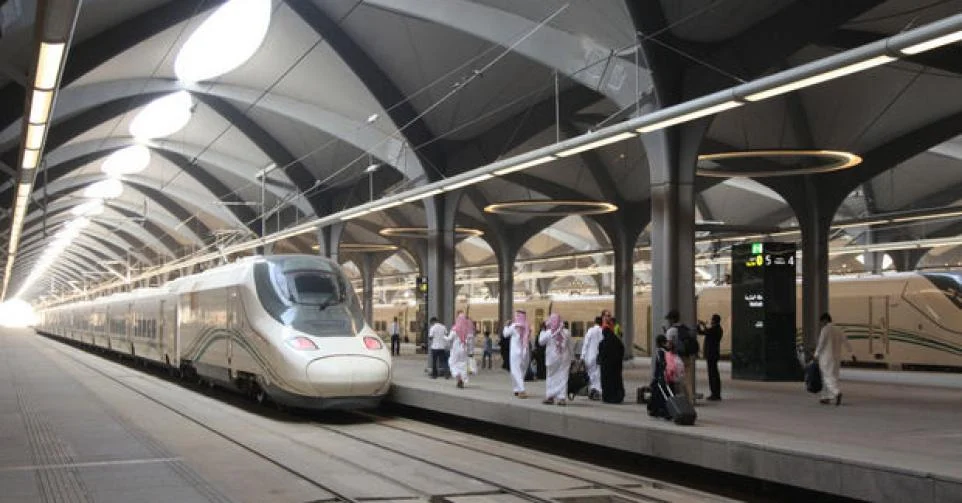Tourism Saudi As Saudi Arabia opens its doors wider to the world, one of the most captivating aspects attracting global travelers is its architectural diversity. From ancient mud-brick forts to cutting-edge urban skylines, the Kingdom offers a breathtaking contrast of the old and the new. At the forefront of promoting this visual and cultural richness is Tourism Saudi, which plays a vital role in guiding both domestic and international visitors through the story of Saudi architecture.
With centuries-old heritage sites and ultra-modern cityscapes emerging side by side, Saudi Arabia offers architecture lovers a unique opportunity to experience design evolution in real time. This article explores how Tourism Saudi highlights the country’s architectural treasures, blending modern aesthetics with deep-rooted tradition to create unforgettable travel experiences.
Also, get to know Festivals and Events Powering Tourism Saudi
Modern Meets Traditional: Design Trends in Tourism Saudi
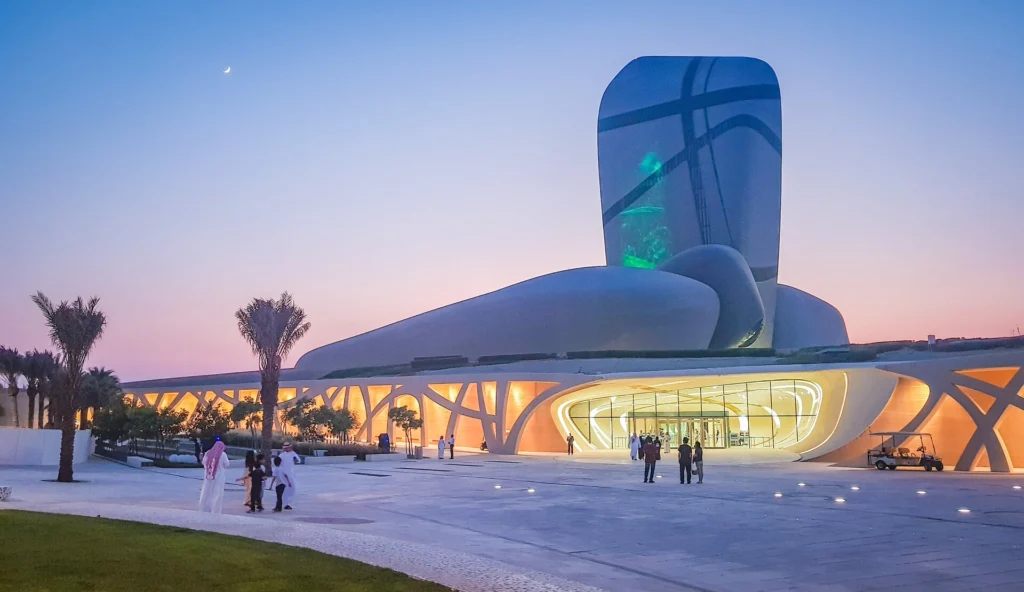
In recent years, Saudi Arabia has embraced a design renaissance—one that honors its past while pushing the boundaries of contemporary innovation.
1. The Rise of Futuristic Cities
Projects like NEOM, The Line, and King Salman Park are examples of how futuristic architecture is becoming a defining feature of the Kingdom’s new identity. These urban developments are more than just real estate—they are cultural statements.
- NEOM: A smart city powered by renewable energy with walkable urban centers and gravity-defying architecture
- The Line: A 170-km linear city designed without cars or roads, featuring mirrored skyscrapers and vertical living spaces
- Tourism Saudi’s role: Promoting these projects as visionary tourist destinations with a strong focus on sustainability and innovation
These megaprojects are already gaining global attention for their ambitious scale and architectural daring, offering an unprecedented travel experience.
2. Integration of Islamic and Regional Design Principles
Despite the influx of modernism, Saudi architecture continues to respect its Islamic and regional roots. Contemporary architects are blending traditional motifs—such as mashrabiya screens, geometric patterns, and arched colonnades—into new buildings.
- Example: The King Abdulaziz Center for World Culture (Ithra) in Dhahran, which merges sleek lines with traditional textures
- Tourism Saudi’s approach: Highlighting this fusion in cultural tours, media, and curated itineraries for design enthusiasts
This balancing act allows modern structures to resonate deeply with the cultural memory of the region.
Also, get to know Tourism Saudi: A Gateway to Arabia’s Untouched Beauty
Visiting Heritage Palaces and Fortresses with Tourism Saudi
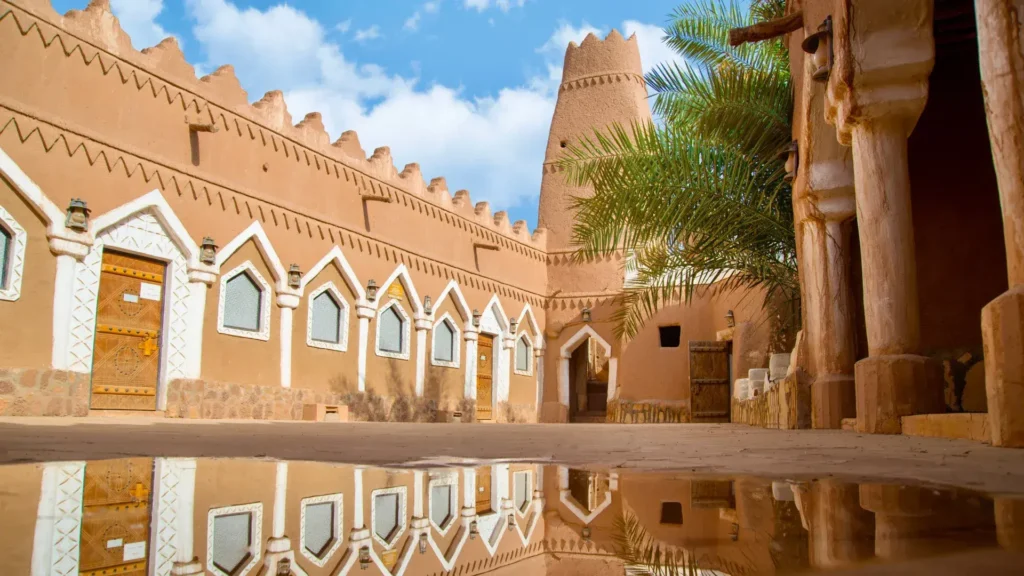
Beyond the skyscrapers and smart cities, Saudi Arabia is rich with historical sites that stand as testaments to centuries of architectural wisdom. Tourism Saudi is working to preserve and promote these locations for both educational and touristic purposes.
1. Masmak Fortress – Riyadh’s Historical Icon
Built in the 19th century, Masmak Fortress is a symbol of Saudi unification and a prime example of Najdi architecture, known for its thick mud walls and palm beam ceilings.
- Features: Defensive towers, traditional doors with intricate carvings, and cooling courtyards
- Tourist experience: Guided historical tours, interactive exhibits, and photo-friendly displays
- Tourism Saudi’s involvement: Digital restoration, foreign-language signage, and integration into cultural itineraries
2. Al-Turaif District – UNESCO World Heritage Site
Located in the historic Diriyah area, this district was once the seat of power for the First Saudi State.
- Significance: Showcases adobe palaces, mosques, and defensive walls built in the Najdi style
- Tourism Saudi’s investment: Large-scale conservation efforts, visitor centers, VR-guided experiences, and outdoor museums
- Cultural enrichment: Traditional music performances and local craft markets on site
3. Shubra Palace – Architectural Jewel of Taif
Built in 1905, this palace exemplifies Hijazi-Ottoman style architecture, characterized by white lattice windows and elegant facades.
- Interior design: Marble staircases, Islamic arches, and preserved royal quarters
- Tourism Saudi’s strategy: Transforming it into a heritage museum as part of Taif’s growing cultural tourism appeal
How Tourism Saudi Showcases Saudi Architectural Identity
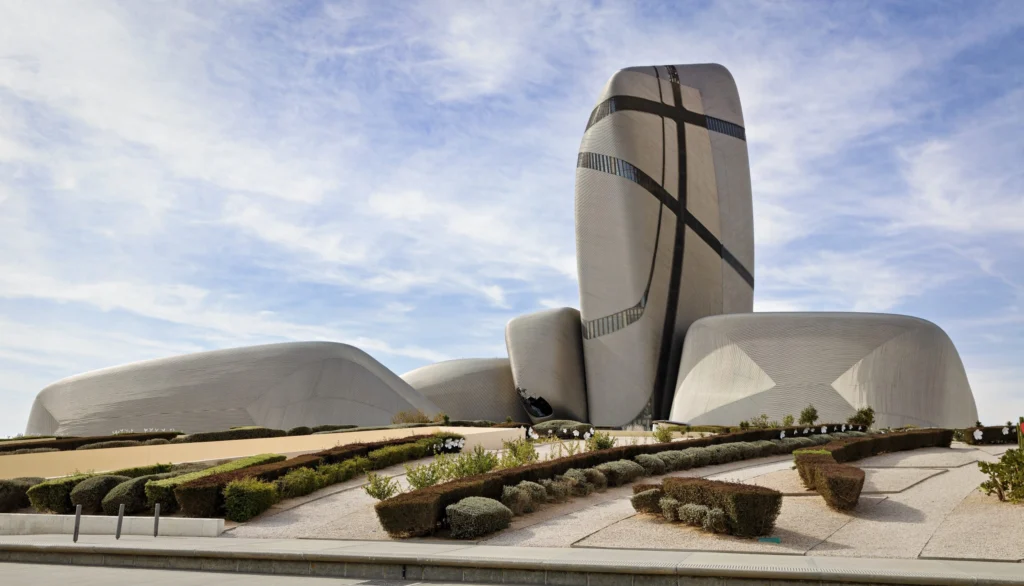
Architecture in Saudi Arabia is more than just buildings—it is a living story of the Kingdom’s religious, social, and environmental evolution. Tourism Saudi brings this narrative to life through immersive experiences and strategic storytelling.
1. Educational Tourism Through Architecture
Tourism Saudi collaborates with universities, architects, and cultural institutions to develop educational tours that appeal to scholars and students.
- Workshops: Held at design landmarks like the Royal Institute of Traditional Arts
- Field tours: Offered in partnership with local architecture schools and global think tanks
- Publications: In-depth brochures and mobile apps guiding visitors through architectural history
2. Themed Itineraries and Architecture Trails
Tourism agencies working under the Tourism Saudi umbrella now offer specialized packages for those interested in architecture.
- Architecture Trails: Routes through Riyadh, Jeddah, and AlUla focusing on historical and modern highlights
- Personalized experiences: Private access to heritage homes, guided discussions with historians, and rooftop views of old city quarters
- Tech integration: Use of AR/VR tools to show how buildings looked in their prime
3. Supporting Local Crafts and Materials
Promoting architectural tourism also means supporting the artisans and traditions behind it.
- Mud brick revival projects: Especially in Najran and Al-Baha
- Stone masonry tours: Available in the mountainous regions of Asir
- Woodwork and lattice exhibitions: Hosted in Jeddah’s historic Al-Balad district
By connecting visitors to these crafts, Tourism Saudi helps preserve intangible cultural heritage while adding depth to the tourist experience.
Emerging Destinations for Architecture Lovers
While Riyadh and Jeddah are well-known urban centers, several lesser-known cities are gaining attention for their architectural significance.
1. Al-Balad, Jeddah
- UNESCO World Heritage Site
- Features: Coral-stone houses with wooden lattices, Ottoman-inspired mosques, and merchant homes
- Tourism Saudi initiatives: Restorations, walking tours, and seasonal art exhibitions
2. Abha and Rijal Almaa
- Traditional architecture: Stone buildings painted in geometric colors, unique to the Asir region
- Cultural festivals: Showcasing Asiri crafts, songs, and storytelling
- Tourism Saudi’s goal: Turn this area into a design tourism destination for global visitors
3. Hail and Najran
- Architectural interest: Mud-brick forts, castles, and traditional tribal dwellings
- Activities: Architectural photography tours and overnight stays in traditional guesthouses
Contact us now to discover more!
Conclusion
Saudi Arabia’s architectural landscape is as rich and diverse as its cultural history—and thanks to the efforts of Tourism Saudi, more travelers than ever are discovering the beauty of its built environment. Whether marveling at futuristic cities rising from the desert or walking through the halls of centuries-old palaces, visitors gain a deeper appreciation of the Kingdom’s identity and evolution.
Through curated experiences, educational initiatives, and preservation projects, Tourism Saudi is ensuring that the architectural narrative of the Kingdom is not only protected but celebrated. For travelers seeking a destination that balances heritage with innovation, Saudi Arabia is becoming an architectural paradise like no other.



